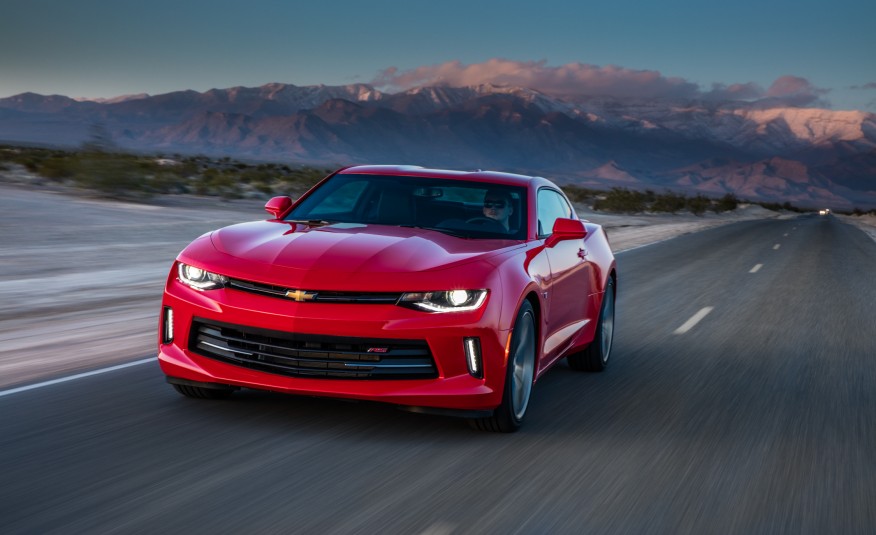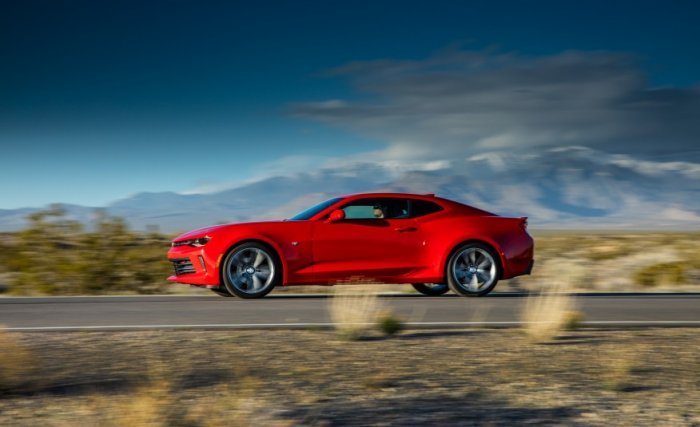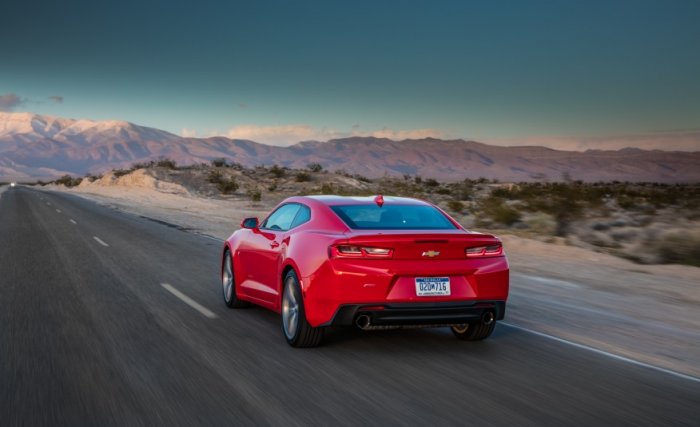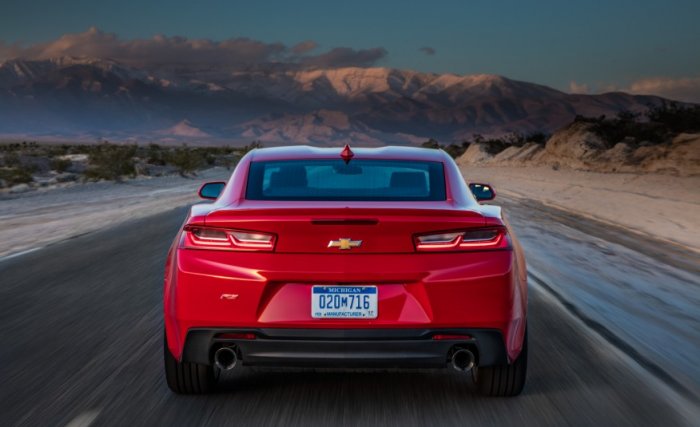
Chevrolet Camaro 2.0T 2016 Review
There hasn’t been a four-cylinder in a Chevrolet Camaro since the third-generation car’s “Iron Duke” 2.5-liter in the 1980s. That lump made only about 90 horsepower, so traditionalist Detroit-muscle fans have spent the intervening decades pretending it never happened. But times have changed—witness Ford fitting its 2.3-liter EcoBoost four under the hood of the latest Mustang—and we’ve just had our first experience at the wheel of a 2016 Camaro powered by GM’s turbocharged 2.0-liter four-banger. With three times the Iron Duke’s output, it promises to wash that sour taste out of our mouths when we say “four-cylinder Camaro.”
What’s That Noise?
Unlike Ford’s setup, which positions the EcoBoost as a premium engine between the Mustang’s 3.7-liter V-6 and 5.0-liter V-8 offerings, Chevy has made the turbo four the Camaro’s entry-level engine in both the coupe and the new convertible. This is essentially the same aluminum-construction, direct-injected powerplant found in the Cadillac ATS and the Chevrolet Malibu 2.0T and the setup you’re likely to get from Hertz the next time you hit the rental counter. Output in the Camaro is rated at 275 horsepower at 5500 rpm and 295 lb-ft of torque at 3000, notably less than the available 335-hp 3.6-liter V-6 and the SS’s 455-hp 6.2-liter V-8. But with the sixth-gen Camaro’s significant weight savings over its predecessor—about 200 pounds, depending on the model—the 2.0T is a capable engine that should cut about 100 pounds from the V-6’s curb weight.

Besides output, the other significant difference is the flatter, weedier exhaust note the turbo four emits, which doesn’t quite fit the Camaro’s menacing looks. Chevrolet has enhanced the four’s acoustic signature without making it too artificial, but it’s still no match for the internal-combustion music produced by the two naturally aspirated engines. The sound is aggressive yet refined, tuned to emphasize the engine’s mechanical and forced-induction noises. We noticed the four-pot droning only a little at low rpm on our drive through the Nevada and California deserts. All 2.0T Camaros feature active noise cancellation to whittle out unwanted frequencies in the cabin, and the optional Bose audio system can further enhance the engine’s playback via the speakers. We’re still not fans of the latter technology, but Chevy allows the driver to disable it.
Different Yet Similar
As with other Camaros, the turbocharged four-cylinder comes with a six-speed manual transmission standard and General Motors’ eight-speed automatic as a $1495 option. There’s little lag as the 2.0T’s turbo spools up, and the manual’s slick shifter and nicely arranged pedals help the driver access the power. The eight-speed’s rapid shifts and additional ratios make better use of the 2.0T’s modest output, however, so the automatic feels more flexible in the real world. The dual-mode exhaust that sounds so good on the V-6 and V-8 cars isn’t available here, but pretty much everything else is familiar to the Camaro, including standard 18-inch wheels (20s are optional), an eagerness to change direction, and an impressive level of refinement. Fewer cylinders and lower mass also improve fuel economy over the V-6 by 3 mpg in the city and on the highway; both the coupe and convertible turbo fours are EPA-rated at 21/30 mpg city/highway with the manual and 22/31 with the automatic.

A few laps of the track at Spring Mountain Motorsports Ranch revealed the lighter 2.0T to retain the Camaro’s familiar grip levels and excellent agility, as well as ample grunt when powering out of corners. The standard Driver Mode Selector adjusts the throttle mapping, electric power steering, stability control, and the automatic’s shift programming for Tour, Sport, and Snow/Ice settings. We weren’t able to affix our testing equipment to a 2.0T model during our initial drive, but GM claims the run to 60 mph will take 5.4 seconds in the coupe, with a quarter-mile pass of 14 flat at 100 mph (we’ve recorded times of 5.1 and 13.7, respectively, from a manual 2016 Camaro V-6). The coupe’s figures should increase by a couple of tenths for the 2.0T convertible with its additional 200-or-so pounds of curb weight.
Not a Stripper
Camaro 2.0T prices start at a reasonable $26,695 for the coupe and $33,695 for the droptop—$1495 less than V-6 versions. And in case you think Chevy took the no-frills route as did Ford with its base Mustang, available extras range from special appearance packages and leather upholstery to a head-up display and a heated steering wheel. While you won’t be able to pair the new Camaro’s 1LE performance package with the 2.0T, there is a Heavy-Duty Cooling and Brake package ($1285) for the occasional track day. When paired with 20-inch wheels ($800), this includes Brembo four-piston front brakes with performance pads and additional coolers for the engine oil and coolant. Although the turbo four definitely isn’t our preferred setup for a pony car—we’d go the extra $1500 for the Chevy’s gutsy V-6 any day—settling for the 2.0T still gets you many of the qualities that led us to name the more powerful Camaro coupes to our 10Best Cars list for 2016.


























